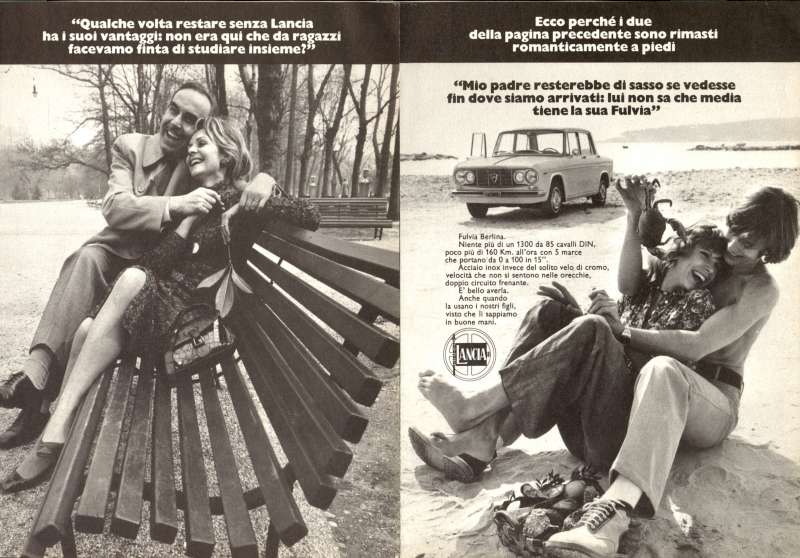I finished restoration of a S3 coupe in August. Now, about 7000 kms later, the car would hardly start and run badly. I checked everything to find a salt like deposit on the filters in the banjo's on the carbs and in the carbs themselves.
The tank was de-rusted, zinc phosphated and coated with a special layer. Fuel lines new and made from cunifer, an alloy of copper, nickel and iron which does not rust. Flexible lines new. Fuel pump new. Carbs are new Dellorto's. Fuel pump new. Of course there is a fuel filter just before the fuel pump. Everything as clean as a whistle except that there is a massive deposit of a white salt like substance. It is a bit cristalline.
Does anybody have an idea what it could be and where it could have come from?
Salt in the carbs?!?!?!?
-
Thomas
Re: Salt in the carbs?!?!?!?
Have you tasted if it's NaCl?... if it is, it's edible (if not, well, you may have found an interesting ingredient - if you'd rather avoid experimenting check whether it dissolves in hot water); any additives to the fuel during restoration (so to keep its properties after long storage)? Note that zinc and lead corrosion resembles salt (not crystalline though, just small whitish flakes), and at least Zn will be found in the zamac of the carbs (is the thread for the banjo affected?) or from some residue of the phosphatation process of the reservoir. At that point at the carb entry would probably be the first time the fuel flow gets turbulent (combination of flowspeed and filter element mixing up things) which may act as a catalyst for a reaction of some kind. Just a few loose thoughts...
-
neil cundy
Re: Salt in the carbs?!?!?!?
Hi Huib,
As there seems to be no contamination down stream - it would be a resonable guess that the contamination is coming from up stream after the engine has been switched off and the fuel is slowly draining back to the tank. Could it be that there is a water leak in the manifold and the water is leaking back into the carbs and the micro-filter. Is it scale or some anti-freeze residue you are seeing ??
Neil
As there seems to be no contamination down stream - it would be a resonable guess that the contamination is coming from up stream after the engine has been switched off and the fuel is slowly draining back to the tank. Could it be that there is a water leak in the manifold and the water is leaking back into the carbs and the micro-filter. Is it scale or some anti-freeze residue you are seeing ??
Neil
-
Tony Kovacevic
Re: Salt in the carbs?!?!?!?
When I owned my workshop, we often found a "salt like " substance in the fuel bowls of carburettors that we were overhauling. I couldn't tell what caused this to happen. My guess, is a reaction between the diecast carby components and the fuel being used.Once the carburettor was cleaned, the substance did not re-appear.
-
Christopher Adams
Re: Salt in the carbs?!?!?!?
I have seen much the same thing after leaving a reassembled engine in a shipping container that wasn't totally dry. I thought it was some sort of galvanic reaction between the different metals used in the carburettors (brand new dellortos...).
-
Justin
Re: Salt in the carbs?!?!?!?
Wasn't there talk in the original Fulvia sales brochures of a certain aptitude for "...pleasant picnic and barbecue outings..." ?
-
Huib
Re: Salt in the carbs?!?!?!?
I talked to the company which did the tank. They told me it happens on some types of tanks that one of the chemicals they use to clean the tank reacts with deposits on the inner suface. The product of the chemical reaction which is white then deposits inside the narrow tubes running in the tank. This is most probably the white stuff.
The carbs were taken apart. I found the substance everywhere. Also in the fuel pump, the disposable paper filter and the filter at the bottom of the tank. After cleaning / replacing parts and filtering the fuel from the tank twice the engine starts and runs. Still not well though and it stalls when I flip the throttle. We shall see tomorrow.
The carbs were taken apart. I found the substance everywhere. Also in the fuel pump, the disposable paper filter and the filter at the bottom of the tank. After cleaning / replacing parts and filtering the fuel from the tank twice the engine starts and runs. Still not well though and it stalls when I flip the throttle. We shall see tomorrow.
-
Huib
All well now
The car started at first spark this morning after having slept outside in a damp relatively cold night.
After reducing the pump jets from 45 to 38 it no longer stalls when flipping the throttle repeatedly.
So far so good.
After reducing the pump jets from 45 to 38 it no longer stalls when flipping the throttle repeatedly.
So far so good.
